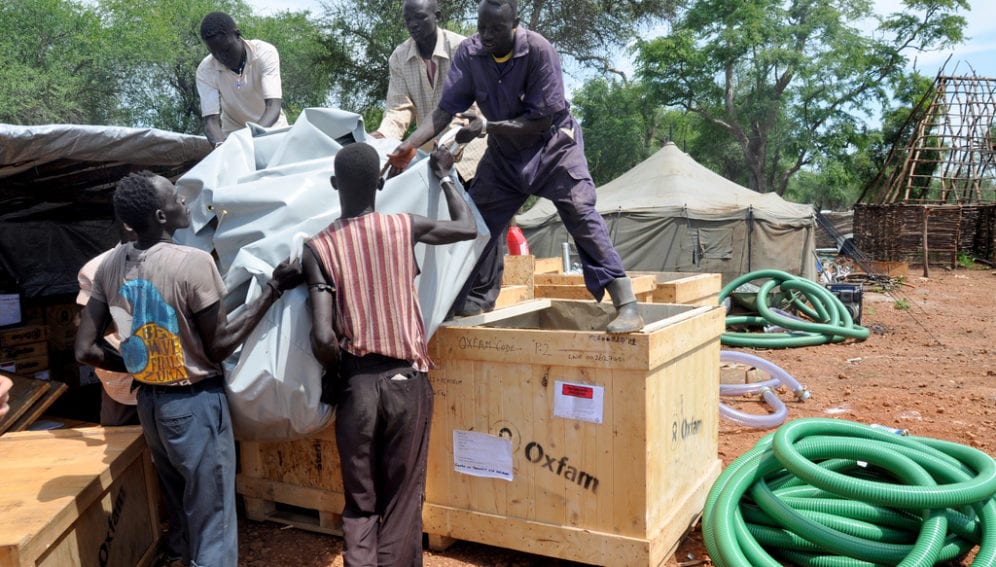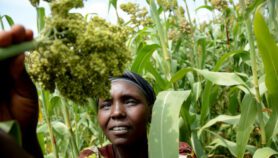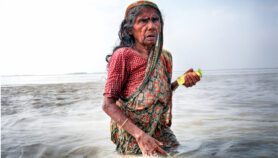Send to a friend
The details you provide on this page will not be used to send unsolicited email, and will not be sold to a 3rd party. See privacy policy.
A compelling new book suggests a scientific revolution is needed in aid practice. But there are key challenges.
Aid has had some success, helping to lift a billion people out of poverty over the past two decades. But establishing how much of a contribution it has made is more complicated. And now the challenge is how to sustain that, and reach the next billion, who are steeped even further in poverty than that first billion.
Development researcher Ben Ramalingam maintains that aid will not achieve this goal without a fundamental rethink. Ramalingam’s book ‘Aid on the Edge of Chaos’, published last week, makes this argument compellingly. His documentation of aid’s failures and interrogation of some successes — such as smallpox eradication — is impressive.
The book makes the case for more careful and consistent application of the same kind of scientific thinking that explained how embryos grow and galaxies die: complex adaptive systems analysis, broadly referred to as complexity theory.
Science is often applied to specific development sectors, from health to agriculture to the environment. But here, Ramalingam calls for science to genuinely be put at the heart of every development intervention — essentially development as science.
The book also challenges the way development institutions tend to think of science. It demonstrates that science is not merely an instrument to be put into programmes like a tool into a machine. Instead, Ramalingam and complexity theorists argue, science could shape the way we conceive of development programmes themselves and what they should seek to achieve.
Complexity science is not about engineering interventions for an artificially ordered world. It is about understanding and documenting the complexities of our real world, and it has built up the capacity to do so. The approach is, as SciDev.Net’s founding director, David Dickson, noted, promising. And it moves away from the simplified view of science and technology that most NGOs typically hold, as described by Oxfam’s Duncan Green.
Systems thinking insights
The structure of the book reflects the complex adaptive systems that it describes. Dipping in at any given page, at first glance the ideas seem familiar yet vaguely overwhelming. Consumed in this way, the book even seems somewhat repetitive, echoing the hubris and experience in much of development practice. But digging deeper reveals a subtle structure and genuine insights into applying systems thinking to development.
And it is important to note that there are several opportunities for application — the book does not present a single model.
It strikes me that there are four principles of complexity theory for aid and development. First, that society and the economy are, like nature, systems. In fact, societies and communities often act like systems embedded in other systems — think of villages linked into national politics, traditional institutions and multinational markets.
“Ramalingam has kick-started a crucial debate about the use of science in development.”
Nick Ishmael Perkins
Second, the agents in these systems interact with each other and their environment, constantly responding to and changing each other. This means that every action has a network of cascading consequences, and understanding these dynamics is crucial for understanding change.
Third, in spite of these complex interactions, each individual or institution’s behaviour is shaped by simple rules which are the result of adaptive evolutionary processes. An example of this might be procreation in the natural world, where the variety of ways in which organisms have sex is shaped by their environment and underpinned by the basic urge to sustain the species.
Finally, this has a number of implications. Crucially, the need for comprehensive systemic mapping of environments, networks and the dynamics within them, as well as the need to consider development as facilitating several experimental actions, rather than designing single, large standardised interventions.
The implications of all this are akin to the paradigm shifts in scientific disciplines.
Challenges with complexity
But there are challenges facing the application of complexity theory to current development practice — many of these are reflected in the book itself.
Ramalingam is clear that this is not a how-to book. Nonetheless, a clear summative description of complex adaptive systems from the perspective of development planning would help the argument.
Someone, somewhere, will need to tackle the conundrum of putting these ideas into practice — what is referred to in the book and elsewhere as a mindset — because there are tricky, practical questions around implementation. For instance, how do you get the ‘level of zoom’ right for your mapping of agents and dynamics when you are aware that everything is connected?
A substantive and constructive critique of complex adaptive systems for development would also be useful. This is important to growing any body of scientific knowledge.
Also unaddressed is the idea that this kind of systems analysis is largely unconcerned with the normative agenda at the heart of development work: leaving no one behind. Indeed, describing a society like a natural ecosystem requires a fairly dispassionate take on suffering and power. Of course, systems analysis could map gender dynamics for instance, but more work is needed on making the case, and case-studies, for this.
And there needs to be more study of the impact of complexity science — not so much about proving its value, but more about synthesis and review of its applications. For instance, all the approaches, models and tools derived from complexity analysis that the book refers to appear to offer equal value in spite of the clear difference in contexts applied and resourcing required.
It might be useful to assess these applications in relation to relative strengths and weaknesses for various objectives or settings. Again, this is beyond the scope of this book, but it is for the community of development practice to consider.
When it comes to implementation, limitations in data availability and quality need to be considered. To put the challenge into perspective, only five Sub-Saharan African countries have up-to-date national data records of any credibility. Too many data systems are too fragmented to meet the challenge of complexity analysis.
This underscores that the change required across development practice by complexity theory cannot be overstated. It implies a revolution in funding structures, staffing and communication. As Ramalingam points out, no system can change if it does not change itself. So we are back to a fundamental problem: how to effect institutional change and social transformation on a scale that makes a difference.
Interestingly, the book mentions the World Bank’s experience with complexity analysis around various areas of political reform in South-East Asia. One of the key lessons emerging from these experiences was that reformers need to find spaces where change is already underway, or is most easily leveraged in the system, and facilitate that change. Effectively this meant scaling back the bank’s ambition, and even its visibility. Complexity theorists might want to remember this lesson as they build their case.
But none of these challenges are so serious that development practitioners should overlook complex adaptive systems. Like the cartoons in the book, they would be an awful shame to ignore. Ramalingam has kick-started a crucial debate about the use of science in development — look out for reactions by key figures on SciDev.Net’s opinion pages.
Nick Ishmael Perkins
Director, SciDev.Net
@Nick_Ishmael














